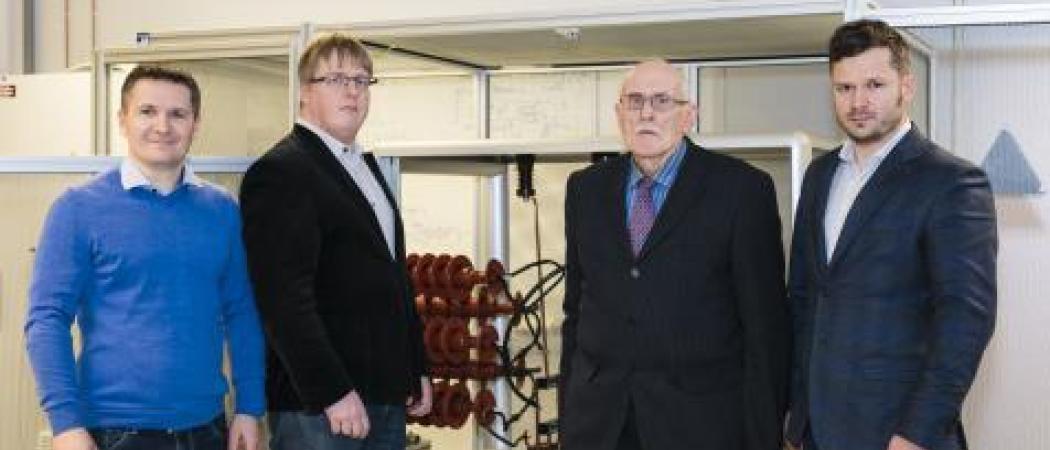
The scientists of the Department of Electrical Power Engineering and Mechatronics of Tallinn University of Technology built a prototype of unique high voltage pulsed power supply unit.
The device was built from 2015 to 2017 in the framework of the European Spallation Source (ESS) project. The ESS located in Sweden, in the city of Lund, is composed of the linear accelerator of protons and a tungsten target. When the protons accelerated to 2 gigaelectronvolts hit the tungsten target neutrons are scattered. The produced neutron radiation is used for transillumination of various test materials and for other scientific experiments. Construction of the ESS involves 17 countries, including Estonia and its scientists. First neutrons on the target are expected in 2019, with the user program planned for 2023, and construction of the entire facility complete by 2025.
Electromagnetic fields created by cavities are used to accelerate the protons in the linear accelerator. Big vacuum tubes called klystrons are used to supply cavities with high voltage. 40...100 kV DC power supplies are used for klystrons. The strong electromagnetic field accelerates the protons in the cavities.
One klystron of the ESS accelerator must be powered with 2 MW DC pulses with a pulse length of 3.5 ms and with voltage of 40 kilovolts. This voltage is achieved by connecting four pulsed power supply units in series.
The 10 kV power supply unit was designed and the prototype was constructed by the scientists of Tallinn University of Technology: Dimitri Vinnikov (general project manager), Tanel Jalakas (operational management, reporting, laboratory testing), Kuno Janson (theory, calculations and laboratory testing) and Heigo Mõlder (process modeling, calculation of electromagnetic fields).
The power supply test stand was assembled in an Estonian company Energiatehnika OÜ and the inductive components were manufactured in Vändra in MS Balti Trafo OÜ. You will have the opportunity to see the exiting test device at a seminar at TTÜ on 15 March starting at 15:00 in room NRG-226 (Power Engineering Building, Ehitajate tee 5, Tallinn).
This release was first published 13 March 2018 by the Tallinn University of Technology.





 A unique international forum for public research organisations and companies to connect their external engagement with strategic interests around their R&D system.
A unique international forum for public research organisations and companies to connect their external engagement with strategic interests around their R&D system.